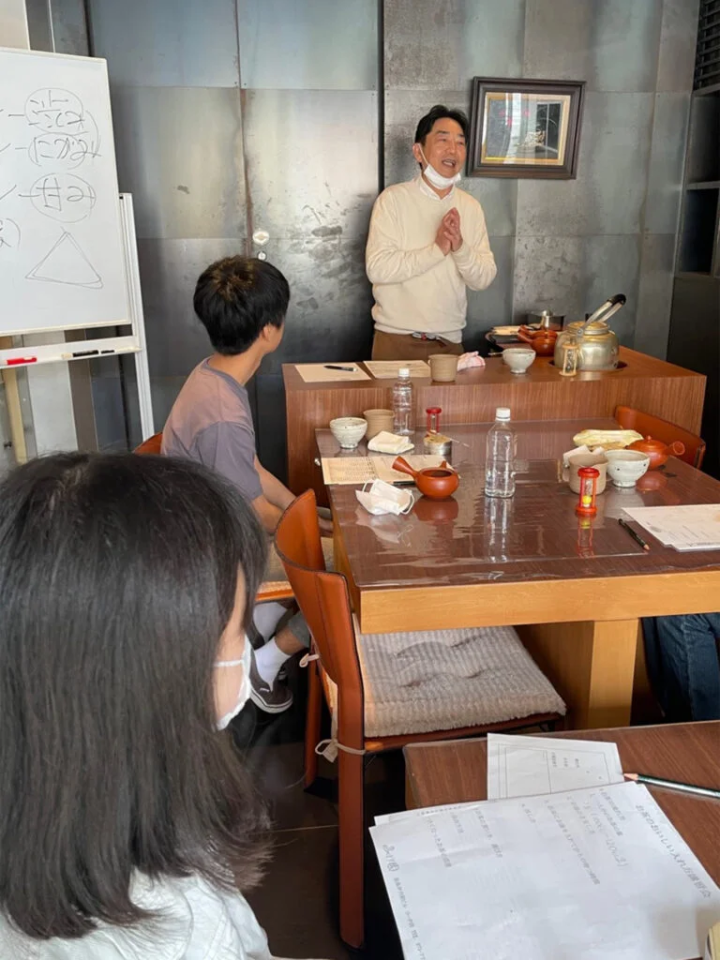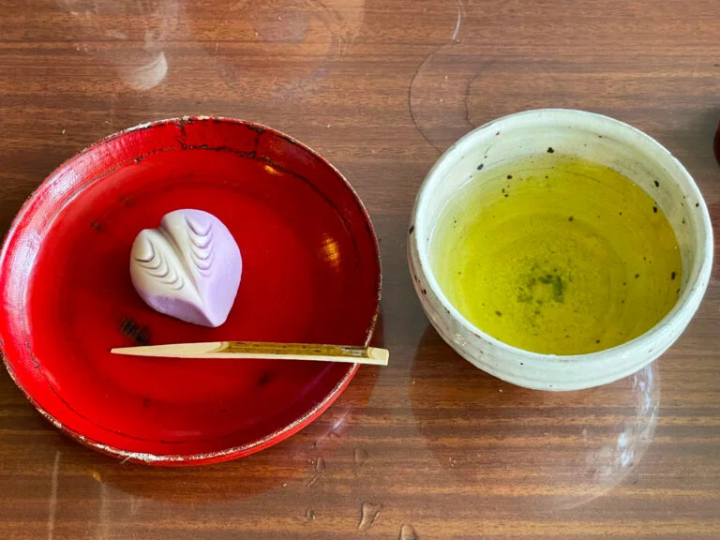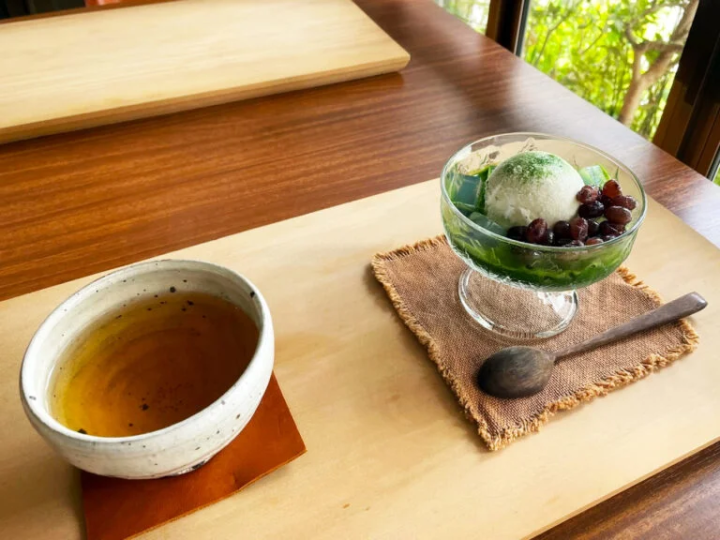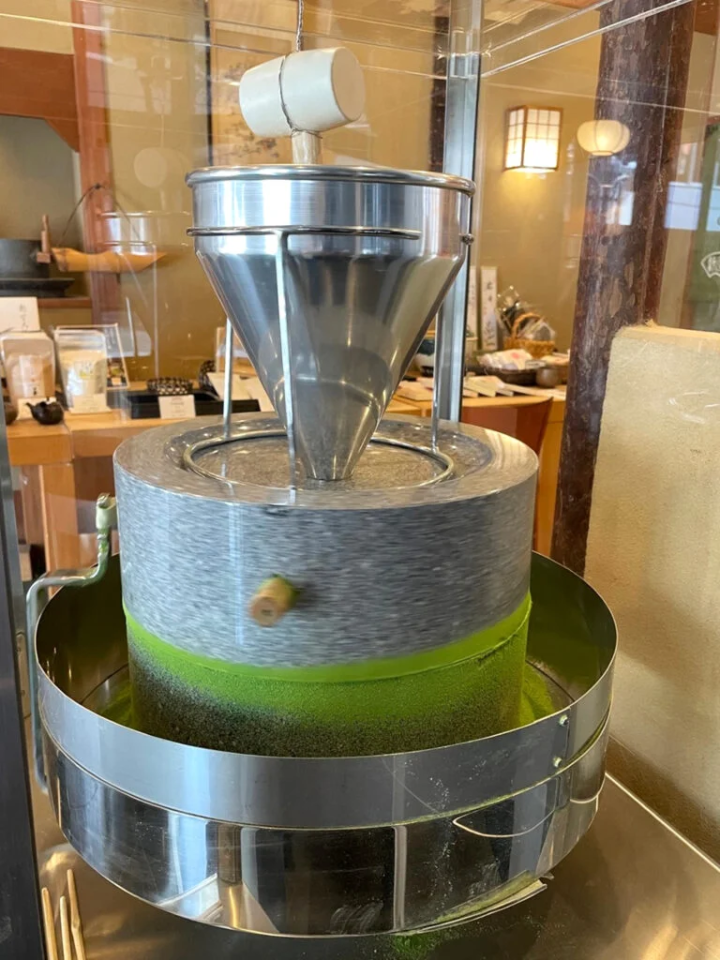[Itami City] Learn about the charm of Japanese tea at a “tea school” at a long-established tea shop founded in 1909!
![[Itami City] Learn about the charm of Japanese tea at a “tea school” at a long-established tea shop founded in 1909!](https://resources.matcha-jp.com/resize/720x2000/2023/12/20-158614.webp)
Midorien, a specialty tea shop in Itami City that also has an authentic tea room, offers a ``Tea School'' where you can learn how to brew delicious Japanese tea and hear stories about tea. Would you like to learn how to dramatically improve the taste with a few simple tips?
-
Table of Contents
- “How to make delicious Sencha” seminar
- The tools needed for tea...
- What is the serving size for one person?
- What is the appropriate temperature for tea?
- What is the key to brewing tea?
- Let’s put it into practice!
- Japanese sweets available at the cafe
- Inside the store...
- basic information

“How to make delicious Sencha” seminar
The lecturer was Fumihiko Sano, CEO of Midorien. Mr. Sano, the third generation inheritor of his family's tea shop, is an expert in Japanese tea and can travel to tea producing regions across the country to select tea producing regions, tour tea plantations, and roast tea leaves. This time, I participated in the ``How to Make Delicious Sencha'' course, which teaches tips on how to brew tea and how to choose a teapot, which you can do at home.
The tools needed for tea...
![[Itami City] Learn about the charm of Japanese tea at a “tea school” at a long-established tea shop founded in 1909!](https://resources.matcha-jp.com/resize/720x2000/2023/12/20-158617.webp)
One thing that is absolutely indispensable is a teapot. Choose the size that best suits your needs, such as a small cup for 1 to 2 cups of tea and a large cup for 3 to 4 cups. The shape of the teapot has a wide bottom so that the tea leaves can easily open up in the hot water, and a flat container with no height is said to prevent the tea from becoming bitter. It is also convenient to have a teapot with a tea strainer inside to prevent tea leaves from coming out from the spout.
![[Itami City] Learn about the charm of Japanese tea at a “tea school” at a long-established tea shop founded in 1909!](https://resources.matcha-jp.com/resize/720x2000/2023/12/20-158618.webp)
Tea leaves are considered to be good if they are thin and twisted and have a uniform shape. It is sensitive to moisture, so store it in a can or aluminum bag and use it up as soon as possible. We do not recommend using the freezer as there is a temperature difference between it and room temperature. If storing in the refrigerator, it is best to store it in the vegetable drawer where there is little difference in temperature from room temperature.

Yusamashi, as the name suggests, is a tea utensil used to heat water to just the right temperature. This step will affect the taste of the tea, so be sure to prepare it. If you don't have one, prepare a separate mug or just use a teacup. You can also use a tablespoon spoon instead of the measuring spoon.
What is the serving size for one person?
![[Itami City] Learn about the charm of Japanese tea at a “tea school” at a long-established tea shop founded in 1909!](https://resources.matcha-jp.com/resize/720x2000/2023/12/20-158620.webp)
The appropriate amount for one person is 1 tablespoon (about 5 g) of tea leaves per 100 cc to 120 cc of hot water. Place one measuring spoon into the teapot.
What is the appropriate temperature for tea?
![[Itami City] Learn about the charm of Japanese tea at a “tea school” at a long-established tea shop founded in 1909!](https://resources.matcha-jp.com/resize/720x2000/2023/12/20-158621.webp)
The steps to brew tea are as follows. ① Pour boiling water into the teacup for about 8 minutes ② Pour it back into the teapot to cool it ③ Transfer it to the teapot, close the lid and let it steep for 1 minute During this time, the tea leaves will slowly open inside the teapot, so wait without touching the teapot. That's the trick. For the second cup, the tea leaves have opened to a certain extent, so I will steep the tea for about 30 seconds in step 3.
Even with the same tea leaves, if the temperature of the hot water is high, it will be more astringent, if it is in the middle, it will be more bitter, and if it is lower, it will be sweeter, so the taste will change. The optimum temperature for achieving a good balance between these three factors is approximately 70 to 80 degrees Celsius. How can I measure this temperature without a thermometer?
Actually, the key is to follow the steps above. ① Pour 100℃ boiling water into a teacup to bring it to 90℃ ② Pour it into a teacup to cool it down to 80℃ ③ Transfer it to a teapot and let it steep for 1 minute to bring it down to 70℃ Pour this into a teacup and it will reach a temperature of about 65℃ The temperature will be comfortable for drinking.
This step brings out the delicious flavor of the tea.
What is the key to brewing tea?
![[Itami City] Learn about the charm of Japanese tea at a “tea school” at a long-established tea shop founded in 1909!](https://resources.matcha-jp.com/resize/720x2000/2023/12/20-158622.webp)
The lid of a teapot has an air hole, and if you hold the teapot with your hand covering it, the tea will not come out. Be sure to place the air hole close to the spout. This will allow air to enter and create convection within the teapot. The way to hold the teapot is to hold it lightly with your right hand without putting any pressure on it, while supporting the lid with your left hand.
In this method, when you tilt it, it naturally becomes stronger and tastes delicious.
![[Itami City] Learn about the charm of Japanese tea at a “tea school” at a long-established tea shop founded in 1909!](https://resources.matcha-jp.com/resize/720x2000/2023/12/20-158623.webp)
When pouring, the key is to tilt it up to 120 degrees. Pour thoroughly until the last drop.
Let’s put it into practice!
![[Itami City] Learn about the charm of Japanese tea at a “tea school” at a long-established tea shop founded in 1909!](https://resources.matcha-jp.com/resize/720x2000/2023/12/20-158626.webp)
Participants tilting up to 120 degrees. I can feel the excitement.
![[Itami City] Learn about the charm of Japanese tea at a “tea school” at a long-established tea shop founded in 1909!](https://resources.matcha-jp.com/resize/720x2000/2023/12/20-158627.webp)
It is a transparent golden color. It gives off a nice scent of tea.

![[Itami City] Learn about the charm of Japanese tea at a “tea school” at a long-established tea shop founded in 1909!](https://resources.matcha-jp.com/resize/720x2000/2023/12/20-158629.webp)
After learning so much about tea, I can breathe a sigh of relief. I was surprised at how delicious the tea was, which was carefully brewed.
![[Itami City] Learn about the charm of Japanese tea at a “tea school” at a long-established tea shop founded in 1909!](https://resources.matcha-jp.com/resize/720x2000/2023/12/20-158630.webp)
"Tea has a natural taste. If you are conscious of the ingredients, you will be able to feel the aroma that lingers in your mouth after drinking it and the taste that comes from the back of your throat. That is the original charm of tea. ” said Sano.
He also touched on the benefits of tea, saying, ``It prevents diseases and is full of ingredients that are good for health.'' Midorien also holds classes on matcha, gyokuro, Chinese tea, and hand-roasted hojicha. This time I learned about ``Sencha'' and realized that the world of tea, which is part of Japanese culture, is deep and the more I learn about it, the more interesting it becomes.
Japanese sweets available at the cafe
![[Itami City] Learn about the charm of Japanese tea at a “tea school” at a long-established tea shop founded in 1909!](https://resources.matcha-jp.com/resize/720x2000/2023/12/20-158631.webp)
There is also a cafe where you can eat sweets made with Midorien's original matcha, Arioka no Midori.

The combination of the bittersweet matcha and the sweetness of the red bean paste makes a perfect match with the texture of the ice cream and agar. After your mouth has cooled down, the aromatic and refreshing hot hojicha will soothe you.

The beautiful and elegant green matcha has a very strong aroma and goes perfectly with the sweetness of the nerikiri.
Inside the store...

A machine with a strong presence was sitting here. Apparently it can grind 40g of matcha per hour. As you approach, you can smell the pleasant scent of matcha.
![[Itami City] Learn about the charm of Japanese tea at a “tea school” at a long-established tea shop founded in 1909!](https://resources.matcha-jp.com/resize/720x2000/2023/12/20-158636.webp)
We also sell carefully selected teas and tea utensils from carefully selected production areas. You can also enjoy seasonal tea parties, tea ceremony classes, and lunch.
![[Itami City] Learn about the charm of Japanese tea at a “tea school” at a long-established tea shop founded in 1909!](https://resources.matcha-jp.com/resize/720x2000/2023/12/20-158637.webp)
Although I had an image of being a formal tea ceremony, I was able to learn about the charm of tea and feel closer to the spirit of Japan.
(writer ako)
*This article is information as of June 2023. Prices include tax. Product contents and prices may change.
basic information
Midori garden
Address: 1-8-3 Nishidai, Itami City, Hyogo Prefecture 664-0858
Phone number: 072-772-5359
Business hours: 10:00~18:00
Closed: Thursday
Access: 2 minutes walk from Hankyu Itami Station
What are good things and good experiences? There are many characteristics such as having a story to tell, overflowing with the thoughts of the creator, having a history, and being loved by the locals. Have you ever come across a special thing or experience that made you want to tell someone about it? And as a result of telling, someone new leads to something. We think that's what "good" is all about. In order to deliver such encounters to our customers, we discover Hyogo's good things based on the concept of "talk, communicate, and connect", and provide information that will shorten the emotional distance between customers and the region of Hyogo Prefecture.
The contents on this page may partially contain automatic translation.































![[2026] Top 5 Strawberry Picking Spots in Tokushima, Naruto| Farms and Access Guide for January to May](https://resources.matcha-jp.com/resize/720x2000/2025/03/06-227165.webp)
![[Yamanashi/ Hokuto City] 4 Hot New Spots Opening in 2026](https://resources.matcha-jp.com/resize/720x2000/2025/12/12-252747.webp)


